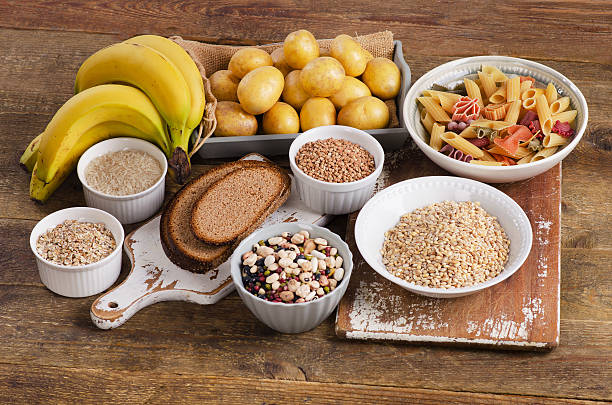Hasn’t it happened to you that you’ve been training for months or years, following a discipline and daily routine to get that beefy body you aspire to achieve?
But despite your effort, you feel you are barely a quarter of the way there.
The reason is that they manage to gain muscle mass, and you do not (Or at least not at the same rate).
It may be due to the factors we will expose in this post about three excellent ways to gain muscle mass quickly.

1. Eat a Sufficient Amount of Protein
Eating more proteins is highly recommended for your macros. The amino acids located in protein are the building blocks for your muscles.
Protein is found in every cell and tissue inside the body. While it has many crucial roles in your body, protein is vital for muscle growth because it supports the repair and maintains muscle tissue.
High protein intake delivers several likely health benefits and could support increased weight loss, enhanced muscle growth, and improved overall health.
How do you eat sufficient protein?
Here are a few quick, effective ways to increase your protein intake.
- Snack on cheese.
- Replace cereal with eggs.
- Top your food with chopped almonds.
- Choose Greek yogurt.
- Have a protein shake for breakfast.
- Include high-protein food with every meal.
- Choose leaner, slightly larger cuts of meat.
Other customs must complement it in your day to day. For example, muscles do not grow when inhaling or exhaling oxygen. Not how intense your training is, but rather a balance between your exercise routine, food, and rest.
It is only enough that one fails for you to see how the results last longer; therefore, you will not be able to get the most out of the training you are carrying out.
Knowing this, we want to tell you that I got muscle mass if you wish. The first step will be to read this post in its entirety. We assure you that the information will be worth gold.

2. Get Plenty of Sleep and Rest
Sleeping or resting too much is often associated with laziness, idleness, or laziness.
Although it is a trait in lazy individuals, the truth is that a good amount of rest should also be included for those who train.
The reason is primarily to allow your muscles to replenish themselves and create new muscle tissue. However, it also helps tremendously prevent muscle tears or some muscle spasms from not allowing your muscles to recompose properly.
How Much Deep Sleep for Muscle Growth?
Sleeping 7-9 hours a night is vital, especially if you want to increase muscle mass quickly, correctly, and recommended. In addition, take advantage of any extra hours (if you have the time) in the afternoon, just before lunch, or after training (if you train in the afternoon).
Growth hormone is produced during sleep, and protein synthesis (provided protein is consumed before resting) occurs. However, these are only two valuable factors of sleep.
Energy consumption drops and brain cell restoration are equally crucial for muscle mass.
Sleeping after a hard workout in the gym will help you avoid tiredness and muscle fatigue. Leaving your muscles ready for the next day’s routine.
3. Increase Your Carb Intake for Muscle Mass
Carbohydrates are excellent for building muscle and burning fat if you know how much to eat. Carbs are also an energy source for the body to rely on throughout the day. Unfortunately, they often get a bad rap in the fitness world.
But your diet has an important place for carbs, especially if you’re looking to pack on serious muscle mass.
Do Muscles Look Bigger After Eating Carbs?
Eating tons of carbohydrates is one of the most convincing and easiest ways to look more significant because the glycogen in carbs draws lots of water into your muscles and can offer a puffy look.
It’s impossible to gain muscle mass without carbs. Still, keeping body fat stores from bulging with them is challenging.
So sometimes consider this to help persuade your body to use carbs rather than body fat for muscle building.
What Are the Best Carbs for Muscle Gain?
Here’s a list of 7 outstanding high-carbs to eat—especially those that can enhance muscle recovery and increase muscle mass.
- Fruits and Vegetables.
- Sweet potatoes.
- Beans and Legumes.
- Oats.
- Quinoa Rice.
- Whole grain bread.
- Whole grain pasta.
Remember, these foods are most useful for bulking and aren’t considered foundational carbohydrates for those trying to rip up, so time your carb intake wisely.
4. Don’t Exaggerate Cardio Sessions
Muscle transformations vary significantly in response to aerobic training, for example, versus resistance exercise. Therefore, the more you train for one, the more challenging it will be to reach the same level in the other.
Best Time to Do Cardio When Building Muscle?
The best time to do cardio for muscle mass is after lifting weights. On days you train the upper body, perform cardio first.
When it comes to days training lower-body, do cardio after working out.
If your goal is general fitness, do either first, but start with the one you like less.
Contrary to what many believe, cardio can benefit those looking to get bigger and stronger muscle mass. This is because cardio improves the cardiovascular system, thus enhancing the quality of your weight training and allowing you to eat more muscle-building calories while staying lean.
How Often Should You Do Cardio When Building Muscle?
To maintain your muscle mass, limit your cardio sessions to three to four times per week, between 30 to 40 minutes each.
Keep the intensity levels low and keep the length of time down.
You’ll enjoy muscle-building benefits by performing these exercises while getting plenty of heart-healthy cardio.
5. Increase Progressive Overload Training
Progressive overload training challenges your body and strengthens your musculoskeletal system.
This training helps you gradually increase weight, frequency, or number of repetitions.
Suppose you don’t progressively overload your muscles by pushing them to do more than they’re used to. In that matter, your muscles have no reason to make additional transformations.
On the other hand, suppose you’re looking to improve your appearance. At that point, you may fail because you’re not challenging yourself.
How Do You Build Muscle With Progressive Overload?
The easiest way to build muscle with progressive overloading training is lifting with heavier weight than the previous training session while maintaining proper lifting form.
First, you can raise the increased weight by matching the same number of reps beforehand.
Then, once done correctly, you should move on to high weight progressively.
When you are attempting progressive overload training, it is essential to follow a program.
This prevents someone from increasing the weight or intensity too quickly on days when they feel good.
It also causes progress by assuring a person knows what to do in the gym daily.

How Many Reps for Progressive Overload?
It’s highly recommended to perform 12- to 15-reps while adjusting to the two other variables that impact volume: load and sets.
The number of reps during progressive overload training should increase definition or muscle size.
6. Undulating Periodization Training for Muscles
The concept of undulating periodization is training variables (volume, intensity) change more frequently than linear periodization, improving neuromuscular stimulation.
Does Periodization Increase Muscle Growth?
Periodization of various training factors has been suggested to cause the following:
- Significant improvement in muscular performance (or, in the case of bodybuilding, a more incredible muscle boost)
- Reduce the risk of non-functional overreaching or overtraining.
You must expose your muscles to any training style long enough to reap the benefits but avoid a nosedive of those positive transformations.
A new training style should be familiarized at this step, and the process should continue.
This will prevent stagnation and maximize workout changes. A simple take on periodization is the maxim, “everything works, but nothing works forever.”
What Are the Benefits of Periodization?
Other benefits of periodization training can:
- Decrease the risk of injury while overtraining.
- Increase strength, speed, and endurance.
- It helps avoid combat training burnouts.
Adding and understanding how to apply and use the science of periodization for systematic and progressive training for your muscle growth allows you to change a program’s volume, intensity, and complexity.
Allowing you to maximize performance while allowing proper levels of rest and recovery as a vital process.

We know that by this point, the theme of proper nutrition is repeated ad nauseam. And I have even come across people and comments on the internet commenting on how heavy the subject of diets tends to be. However, you must understand this is not meant to annoy the reader. On the contrary, if so much is mentioned, it is precisely because it is highly relevant and practical in training.
In the case of those who seek to gain muscle mass, you have to consider that they need to put together a diet focusing on protein consumption. Or rather, the acquisition of it in our food.
Protein allows our cells to regenerate or create new tissues in our body. So, subjecting the muscle to weight training (This will be mentioned later). It expands, and after rest, those “Spaces” must be filled with new muscle tissue, which will only be created if our body has a sufficient amount of protein provided by our diet. For this reason, it is essential to complement your training with a good diet. Well, only then will you be able to achieve muscle mass efficiently.
Intense weight training

The exercise can be worked in various ways. Each type of exercise can be handled with some variations. What gives rise to cardio exercises, working with tension, or those we will deal with today… Exercises based on weight.
As the objective is to achieve muscle mass. In your training, you should not focus on how many repetitions you can do of an exercise. But how much weight can you put on your muscles to get them to expand (gain strength)? In these cases, it is better to focus on making your series approximately three per exercise, following a circuit where you increase the weight a little more each time. Example…
- First series: 10 kilos.
- Second series: 12 kilos.
- Third series: 14 kilos.
Following this example, you would be lifting more weight in each series than in the previous one. It would help to adapt this according to the exercise and muscle you are working on. You shouldn’t risk injury by putting too much stress on your body.
If you consider what has been said, rest assured that you will gain muscle mass in the most efficient way possible.









